

5 min read
This article is more than 8 years old
Culture
Feature
What life is really like for women inside Zaatari refugee camp
A story of the Jordanian camp told in three parts, via the daily lives of the seamstress, the wedding planners and the matriarch.
Published
Updated
By Darrian Traynor
Image: Washing drying in front of a more permanent house in Zaatari refugee camp located in northern Jordan, just 10km from the Syrian border. (Marika Sosnowski and Darrian Traynor)
A Jordanian refugee camp the size of a city
A short drive from the small, unassuming town of Zaatari in dusty, northern Jordan is Zaatari refugee camp, a location which is now home to almost 80,000 Syrian refugees and Jordan’s fourth largest city.
The camp has changed dramatically since it was first erected around five years ago.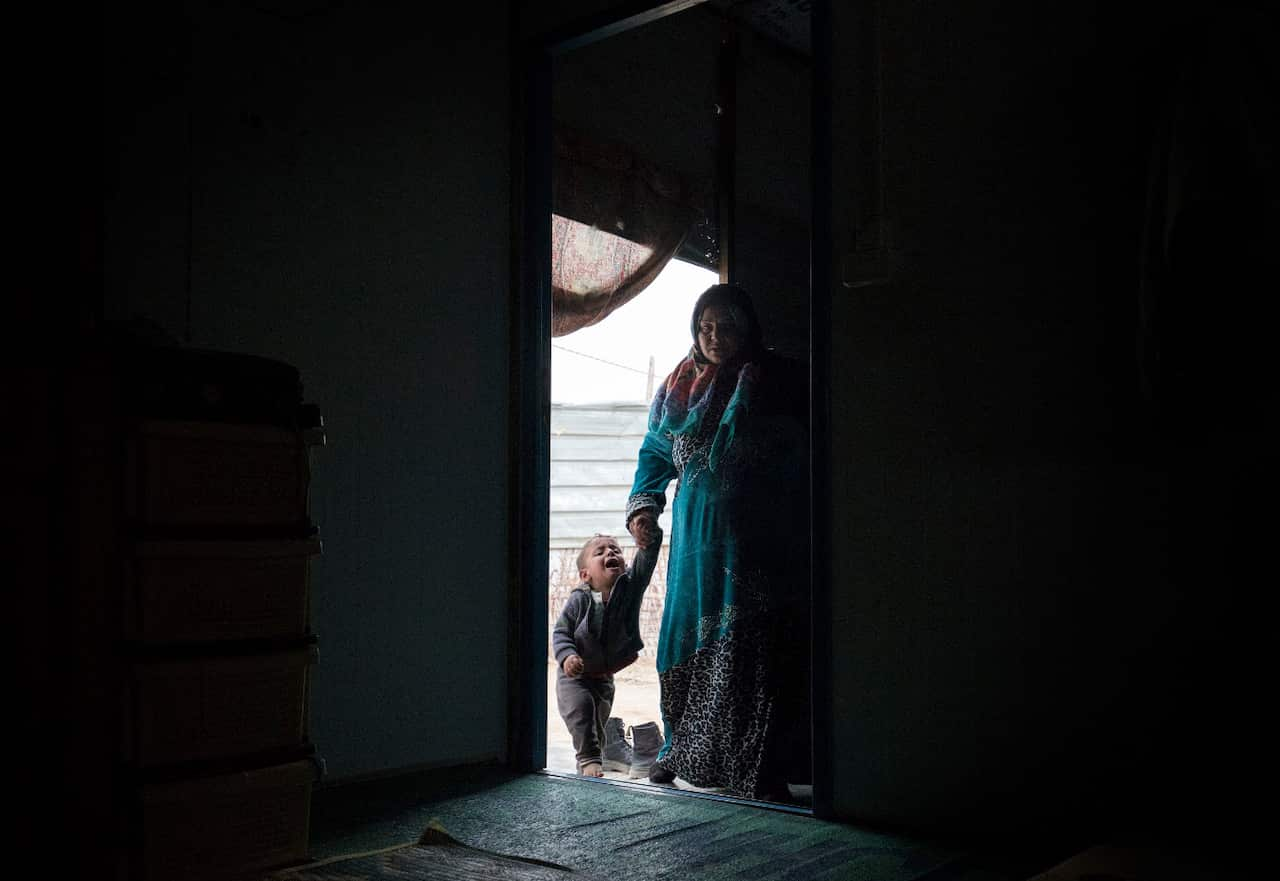 Rather than witnessing the makeshift UNHCR tents you’d expect to see in a refugee camp, visitors inside Zaatari will recognise more permanent dwellings and infrastructure. There are water and sewerage systems and even two main shopping streets - the euphemistically named Champs-Élysées and the Saudi Market, where you can purchase anything from falafel to bicycles to children’s toys.
Rather than witnessing the makeshift UNHCR tents you’d expect to see in a refugee camp, visitors inside Zaatari will recognise more permanent dwellings and infrastructure. There are water and sewerage systems and even two main shopping streets - the euphemistically named Champs-Élysées and the Saudi Market, where you can purchase anything from falafel to bicycles to children’s toys.

Zaatari is slowly but surely becoming a city in its own right, rather than simply a refugee camp. Photo by Marika Sosnowski and Darrian Traynor. Source: 0017.jpg Zaatari is slowly but surely becoming a city in its own right, rather than simply a refugee camp.
I will die before I go back.
As part of my PhD research and ongoing projects in the Middle East, photographer Darrian Traynor and I visited Zaatari in early 2017. When we spoke to residents of the camp, there seemed to be a growing sense of resignation among many that this was now their home.
“I will die before I go back”, Um Yaman, a 21-year-old Syrian mother of three small children tells SBS. But rather than being melancholy, the sense of permanence seemed to offer many women of the camp (one in five households in Zaatari are headed by women) an opportunity to sustain their families and their traditions in innovative and inspiring ways.
The seamstress
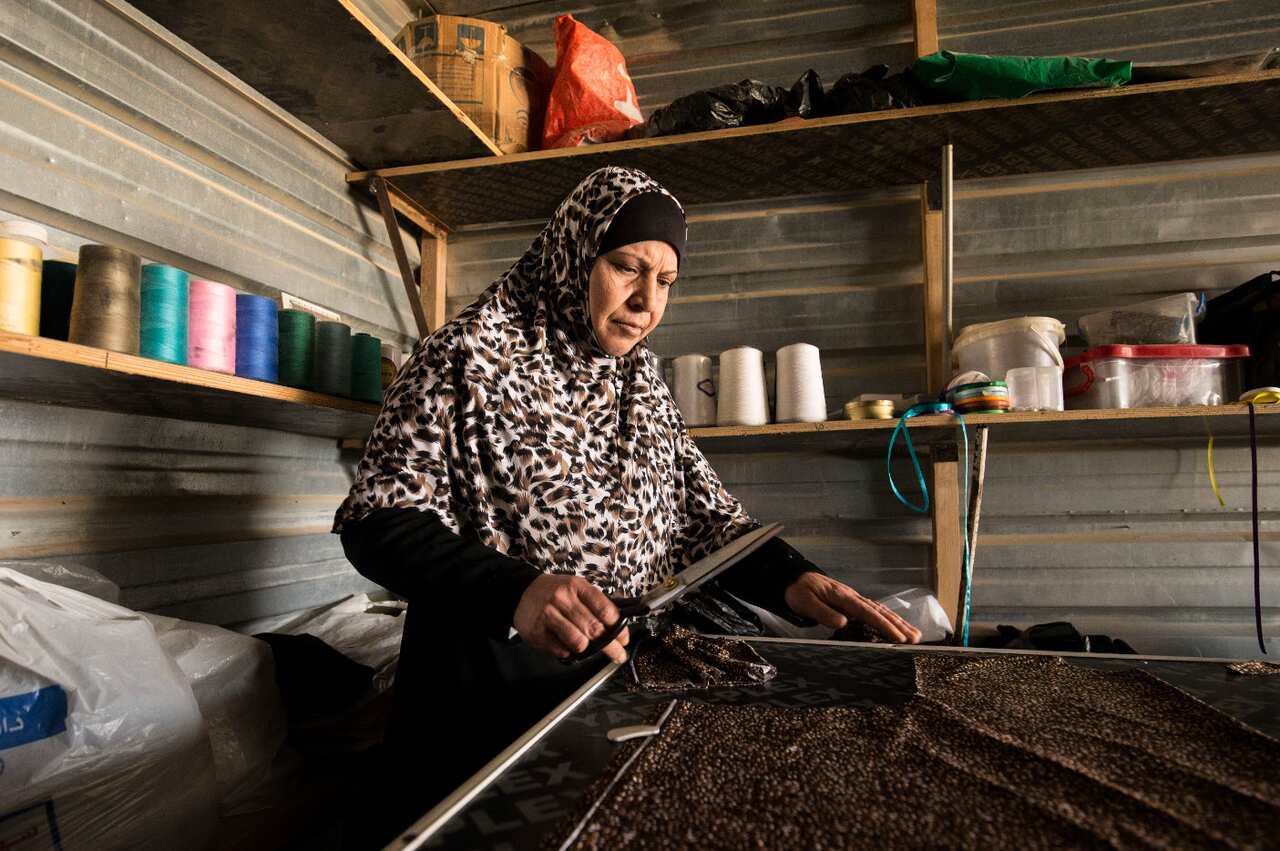
Um Riad works at a makeshift cutting table made from the floorboards of one of the UNHCR caravans. Photo by Marika Sosnowski and Darrian Traynor. Source: Marika Sosnowski and Darrian Traynor
“When I first came to Zaatari, I worked for UN Women making baby carriers”, Um Riad explains. When that work ended about a year ago, through family and friends still in Syria, she managed to sell the goods she had left behind in her house when she had fled - her fridge, the television. She used the money she got from the sale and the savings from her UN job to finance a small business as a seamstress in a shopfront in Zaatari’s bustling Saudi market. Every month or so, she queues for two or three days in order to get a 14-day pass out of the camp so she can go to Amman to buy the fabric she needs to complete her orders.
While each refugee registered in Zaatari receives accommodation and a monthly allowance of 20 Jordanian Dinars (around $35AUD) from the UNHCR, the amount is rarely enough to cover all their needs. Um Riad rents her shop for about 50JOD a month and by designing and hand making traditional abayas and summer dresses for the women of Zaatari, which she sells for around 8JOD each, she manages to cover the rent for the shop and support her family. She even has enough left over to send to two of her daughters that remain inside Syria.
The wedding planners
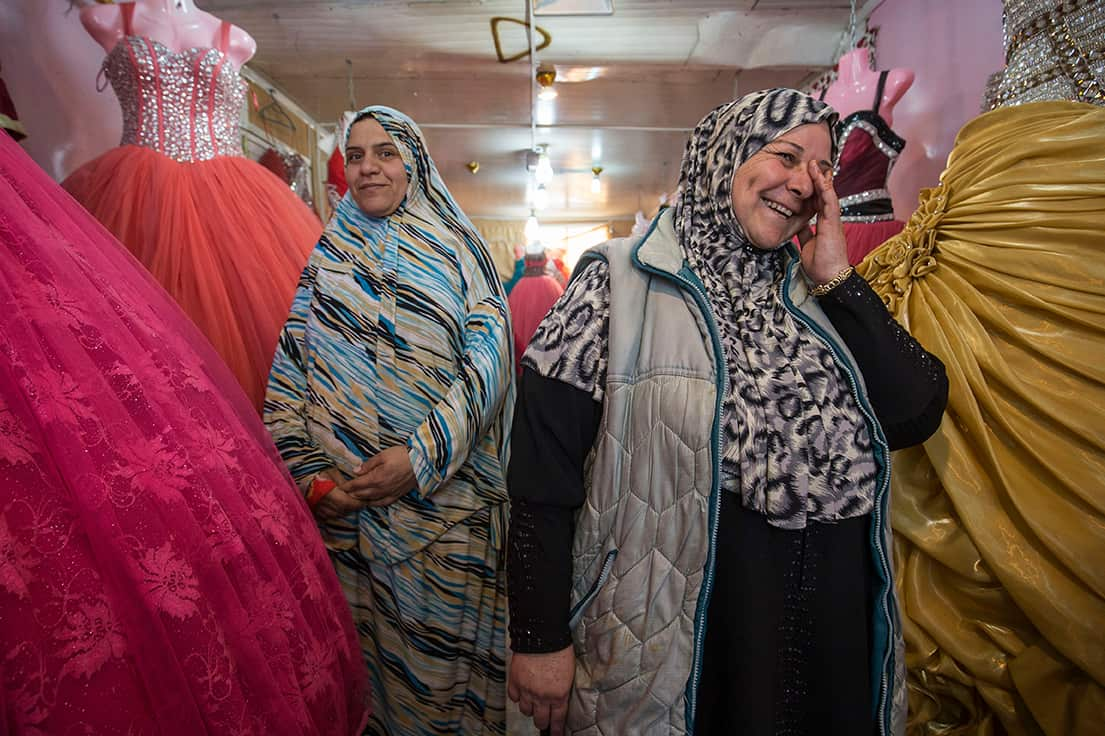
Um Mohamad stands with her trainee Um Ala’a who will run the store for around 10 days when Um Mohamad takes time off to have her fifth child. Photo by Marika Sosnowski and Darrian Traynor. Source: Marika Sosnowski and Darrian Traynor
READ MORE
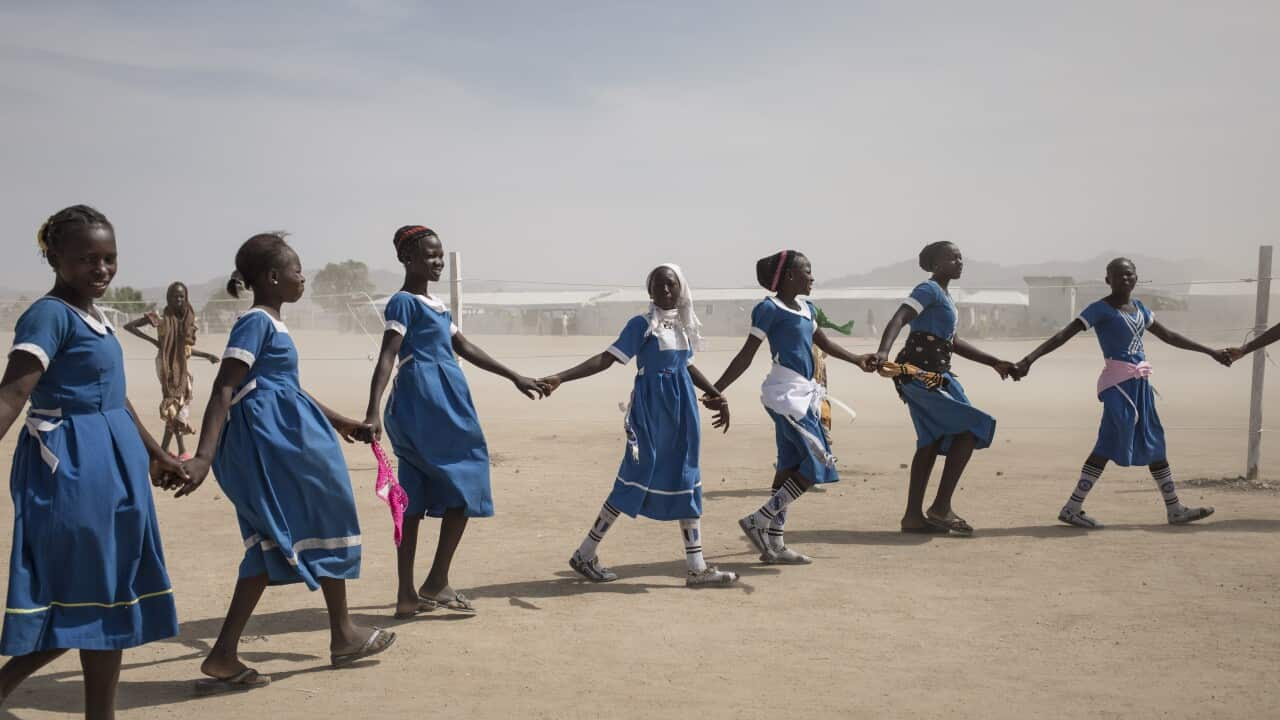
In pictures: The world's refugees
Her trainee, Um Ala'a, a veritable Arab Dawn French, has a hearty laugh and a wicked sense of humour. Wedding planning is a competitive business in Zaatari with similar shops scattered throughout the camp but the pair generate business through word of mouth and good, reliable service. Both ladies giggle as they recount a story of one imminent bride who came to them with hair like ‘steel wool’ and another whose hair had completely fallen out because of the mistakes of another salon. In the case of the now bald bride Um Mohamad and Um Ala’a gave her a wig to wear for the wedding and Um Ala’a laughs heartily describing how they “cheated the husband” about her looks on his wedding night.
The matriarch
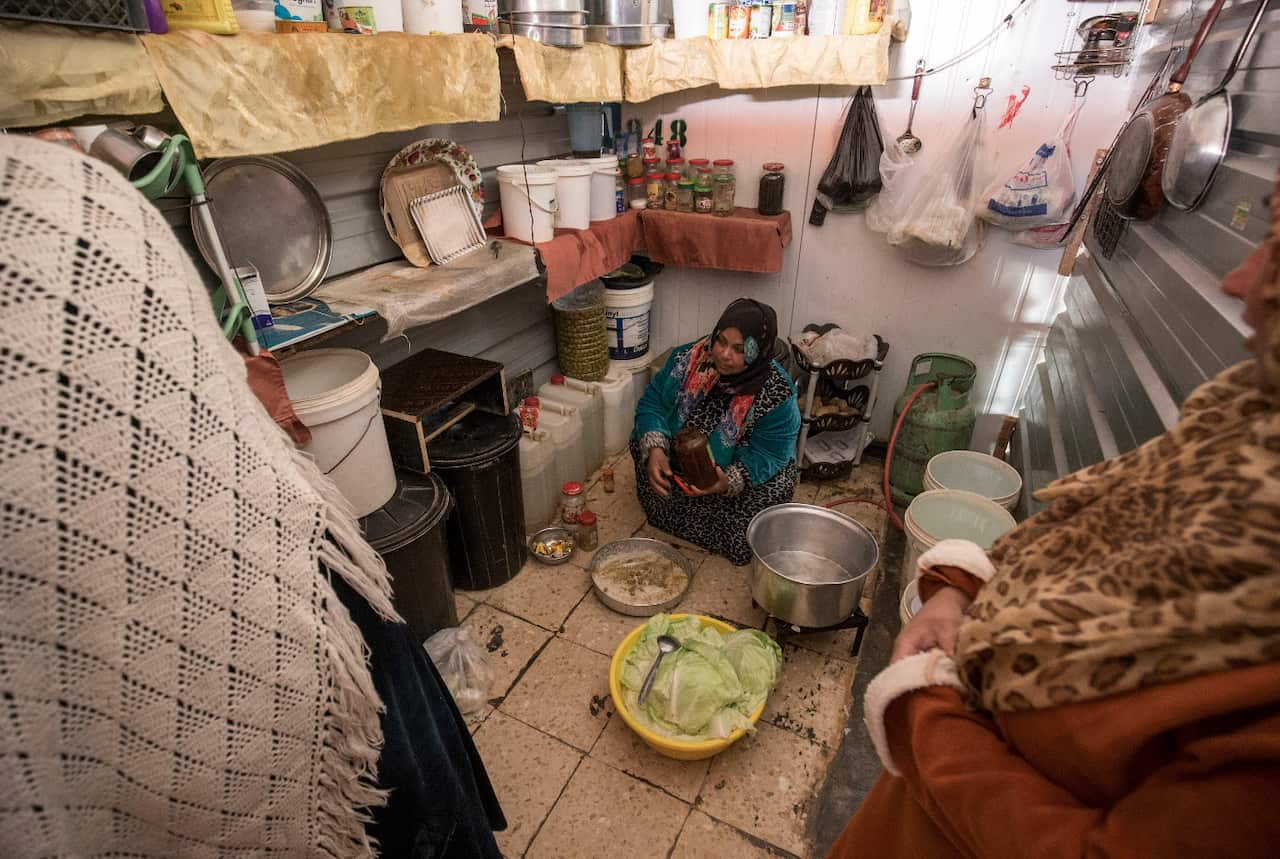
Um Ala’a and her friends preparing malfouf, a traditional Middle Eastern dish of cabbage leaves stuffed with spiced rice and mince meat. Photo by Marika Sosnowski and Darrian Traynor. Source: Marika Sosnowski and Darrian Traynor
The women come together at Um Ala’a’s to drink coffee, share stories, do puzzles and riddles and most importantly discuss cooking arrangements. “Here we would do anything just to not be bored,” says her friend Um Yaman. Many in the community eat lunch at Um Ala’a’s and today, she is cooking malfouf, cabbage leaves stuffed with spiced rice and mince meat. It takes time to prepare, cook, boil and roll the malfouf but the other women pitch in to get the job done. “We’re still following culture and tradition here,” Um Ala’a says.
All the women agree that they have a great community in Zaatari but that they miss relatives that are still in Syria or have fled elsewhere. The women occasionally allow themselves to dream that the war may end and they can return to Syria. ”But if I went back to Syria, I would miss everyone here”, sighs Um Yaman.
Listen to our podcasts
Good writing begins with questions. What does it take to write a good story?
What it's like navigating the world of dating and relationships when you're already partnered up with anxiety.
Real stories that will sometimes surprise you, move you, and leave you hanging on to every word.
Find more SBS podcasts on your favourite apps.
Watch SBS On Demand
The Swiping Game
From the intimacy of their bedrooms, Australians talk all things dating with startling honesty and humour.
